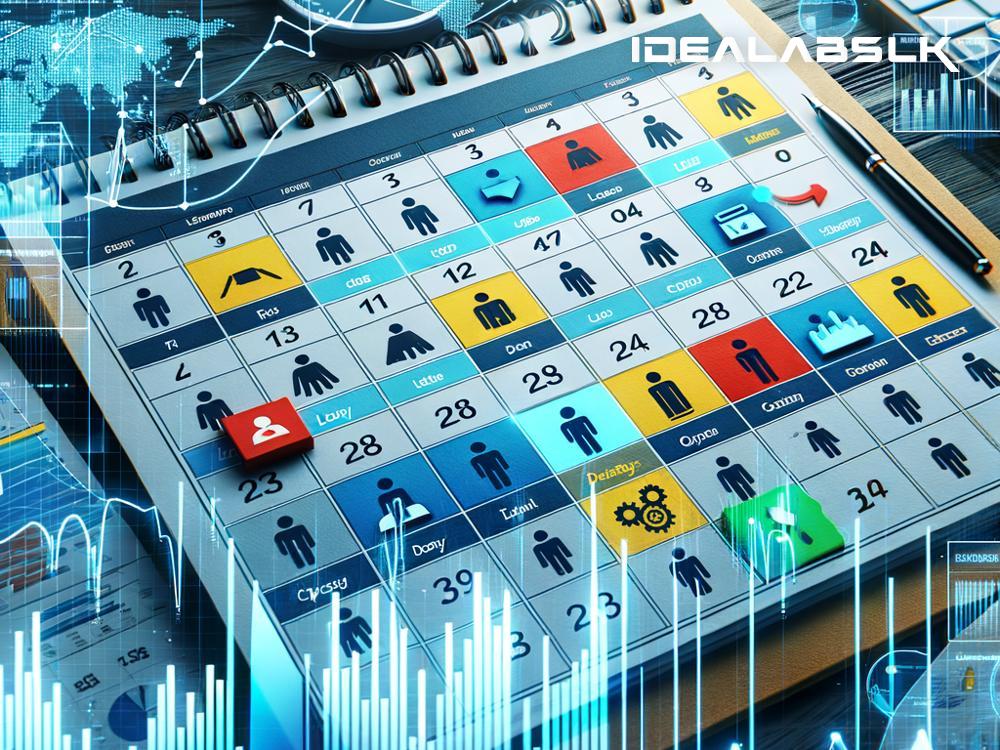How Predictive Analytics Works in Labor Scheduling: Simplified
In today’s rapidly moving world, businesses are constantly seeking ways to operate more efficiently and smarter. One of the key areas where this pursuit of efficiency plays out is in scheduling workers. If you've ever worked a shift job or had to put together a schedule for employees, you know it's like trying to solve a puzzle where the pieces keep changing shapes. This is where predictive analytics comes in, transforming labor scheduling from guesswork into a precise science. Let’s break down how predictive analytics works in labor scheduling in simple English.
What is Predictive Analytics?
Imagine you have a crystal ball that could help you peek into the future. Predictive analytics is somewhat like that, but instead of magic, it uses data and math. It sifts through huge amounts of historical data to find patterns and then uses these patterns to make educated guesses about what might happen in the future. Businesses use these insights to make better decisions, like how many workers they need on a certain day or at a particular time.
The Role of Predictive Analytics in Labor Scheduling
Scheduling workers is more complicated than it looks. Schedule too few, and you’ll find yourself understaffed, leading to unhappy customers and overworked, stressed-out employees. Schedule too many, and you’re paying wages without enough work to justify them. Here's how predictive analytics steps in to save the day:
-
Understanding Patterns: By analyzing past scheduling data, sales numbers, foot traffic, and even factors like weather or local events, predictive analytics can identify trends. For example, it might uncover that your cafe gets busier every time it rains or that your retail store needs more staff on Saturdays.
-
Forecasting Demand: With these trends in hand, the software can make accurate predictions about future demand. This means it can tell you with a fair degree of certainty that you'll need extra hands on deck next Friday evening because that's when you see a 40% increase in customers.
-
Optimizing Schedules: Armed with this knowledge, businesses can create schedules that ensure they have just the right number of employees working at any given time. This leads to better customer service, happier employees, and more controlled labor costs.
The Benefits of Using Predictive Analytics for Scheduling
-
Increased Efficiency: By matching staff levels to demand, businesses operate more efficiently. This can lead to quicker service times, fewer errors, and improved customer satisfaction.
-
Cost Savings: Having the right number of employees working means you're not overspending on labor during slow periods. This makes for a leaner, more cost-effective operation.
-
Employee Satisfaction: Predictive scheduling can lead to more stable and predictable work hours for employees, which is a major factor in job satisfaction. It also reduces the likelihood of last-minute schedule changes, a common pain point for shift workers.
-
Data-Driven Decisions: Instead of relying on gut feelings or past experiences, managers make decisions based on solid data. This leads to more accurate, consistent, and fair scheduling.
Challenges and Considerations
While the benefits are clear, implementing predictive analytics in labor scheduling isn't without its challenges. It requires collecting and maintaining large datasets, investing in the right tools, and training staff to use them. Furthermore, it's important to keep the human element in mind. Predictive analytics can suggest the most efficient schedule, but managers should still consider employee preferences and unforeseen circumstances.
The Future of Labor Scheduling
As technology continues to advance, predictive analytics will become even more accurate and accessible. We’re already seeing the emergence of AI-driven tools that can handle even more variables, offering nuanced insights that were previously impossible to discern. This means that businesses of all sizes will be able to harness the power of predictive scheduling, leading to a future where the right number of employees is always on the clock, ensuring happy customers and happy staff.
Wrapping Up
In a nutshell, predictive analytics in labor scheduling is all about using data to make informed predictions, ensuring businesses have the right number of workers at the right times. It's a game-changer in managing labor costs, improving efficiency, and boosting employee and customer satisfaction. As businesses continue to embrace data-driven decision-making, predictive analytics will play a pivotal role in shaping the future of work. So, next time you see a perfectly staffed store or restaurant, know that there's a good chance predictive analytics was behind that seamless experience.

